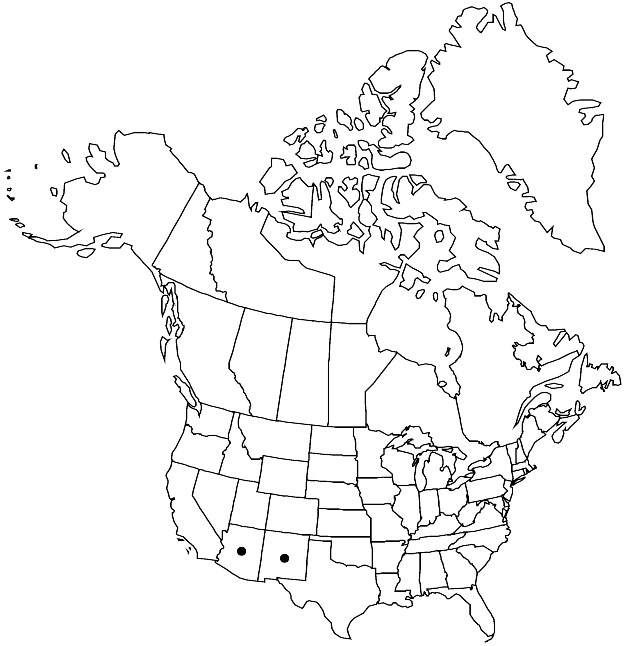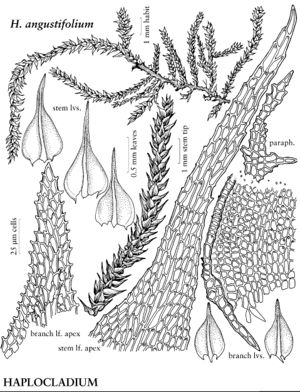Haplocladium angustifolium
in H. G. A. Engler and K. Prantl, Nat. Pflanze n fam. 229[I,3]: 1008. 1907.
Plants small. Stems irregularly pinnate; paraphyllia few, subfoliose, frequently branched. Stem-leaves erect, dense, imbricate, broadly ovate, not plicate, 0.6–0.8 mm; margins plane, serrulate; costa percurrent, filling acumen. Branch leaves crowded, oval to ovate, 0.2–0.5 mm; apex acuminate; alar cells not differentiated; medial laminal cells quadrate, 1-papillose over lumen, shifted distally, walls little thickened. Capsule erect. Spores 10–14 µm, weakly granulate.
Phenology: Capsules mature late summer.
Habitat: Wood, humus, rock
Elevation: moderate to high elevations (800-2000 m)
Distribution

Ariz., N.Mex., Mexico, West Indies, c Europe, Asia, Africa
Discussion
Haplocladium angustifolium occurs in many of the same areas as H. microphyllum but is easily distinguished by the abundant, scattered, subfoliose paraphyllia and stronger branch leaf papillae. The species is more likely to be confused with H. virginianum but the two are distinct in their branching patterns, different branch leaf apices, and laminal cell papillae. These two species are not currently known from the same region in the flora area.
Selected References
None.
Lower Taxa
"broad" is not a number.
